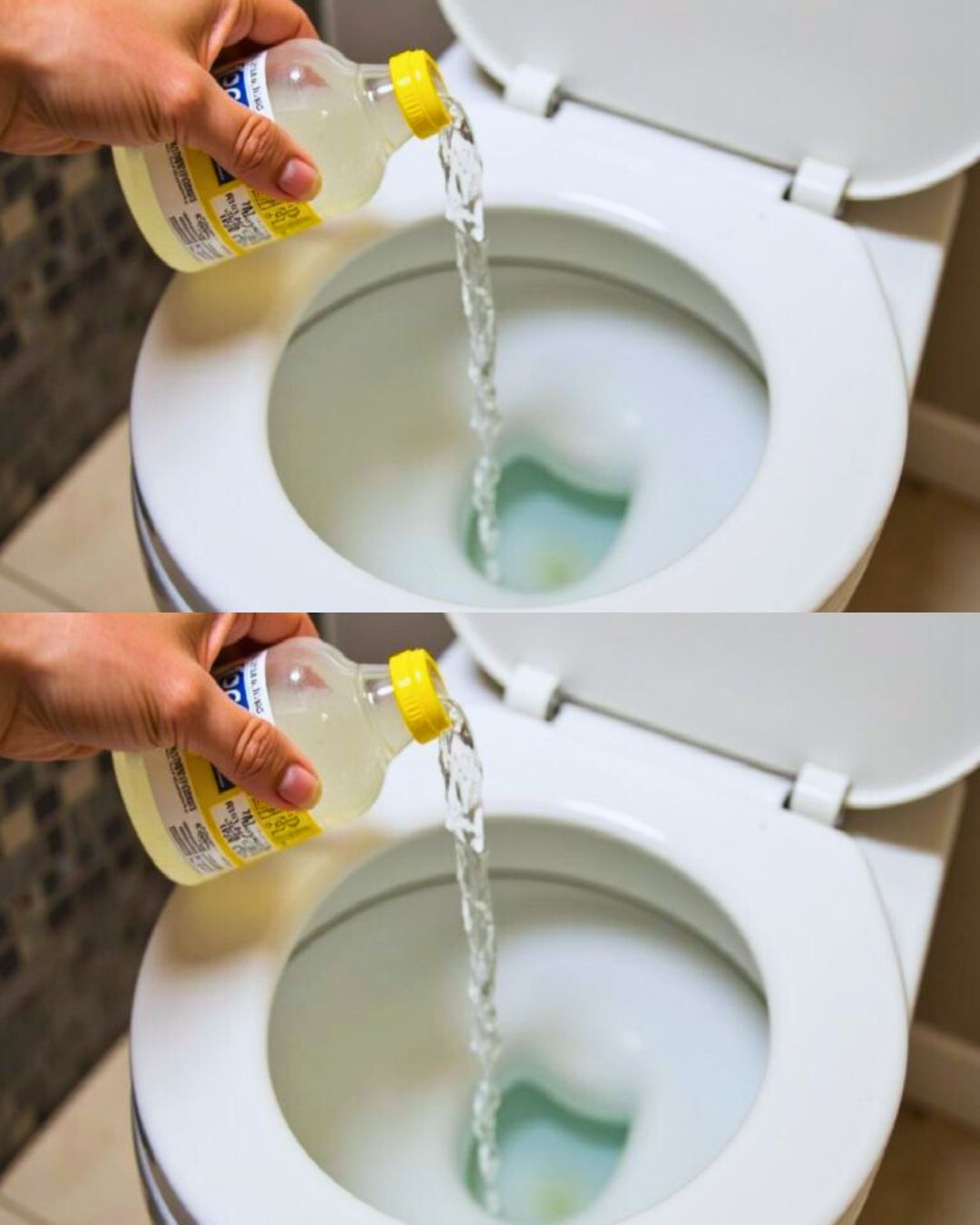Vinegar, the humble kitchen staple, is a powerhouse when it comes to cleaning. Its natural acidity and antibacterial properties make it an effective and eco-friendly alternative to chemical-based cleaners. When it comes to toilet cleaning, vinegar can tackle stains, odors, and bacteria with ease. In this article, we’ll guide you through a simple, step-by-step process to harness the power of vinegar for a sparkling clean toilet, while saving money and avoiding harsh chemicals.
Ingredients
- 1 cup white vinegar
- 1/2 cup baking soda (optional for deeper cleaning)
- A few drops of essential oil (optional for fragrance, e.g., tea tree or lavender)
- Toilet brush
- Spray bottle (optional for spot cleaning)

Directions
Initial Rinse:
Flush the toilet to remove any loose debris and moisten the surface.
Apply Vinegar:
Pour 1 cup of white vinegar directly into the toilet bowl, ensuring it covers the waterline and stains. For the rim and outer areas, you can use a spray bottle filled with vinegar.
Let It Sit:
Allow the vinegar to sit in the bowl and on the surfaces for 15-20 minutes. This gives it time to break down stains and kill bacteria.
Add Baking Soda (Optional):
For extra cleaning power, sprinkle 1/2 cup of baking soda into the bowl. The mixture will fizz, helping to lift stubborn grime.
Scrub Thoroughly:
Use a toilet brush to scrub the bowl, focusing on stained areas and under the rim.
Flush Away:
Flush the toilet to rinse away the vinegar and residue, leaving your bowl sparkling clean.
Serving and Storage Tips
- Vinegar Storage: Keep a spray bottle of white vinegar handy in your bathroom for quick spot cleaning.
- Essential Oils: Add a few drops of essential oil to the spray bottle for a refreshing scent after each cleaning session.
- Deep Stain Removal: Combine vinegar with a paste of baking soda and water. Apply it to tough stains and let it sit for 30 minutes before scrubbing.
- Rust Stains: Mix vinegar with a pinch of salt and apply directly to rust spots. Let it sit for a while before wiping clean.
- Fragrant Cleanser: Infuse your vinegar with citrus peels for a fresh-smelling, natural cleaner.
FAQ
1. Is vinegar safe for all types of toilets?
Yes, vinegar is generally safe for most toilet materials, including porcelain. However, avoid using it on natural stone or unsealed grout, as the acidity may cause damage.
2. Can I mix vinegar with bleach for a stronger cleaner?
No! Mixing vinegar with bleach creates toxic chlorine gas, which is dangerous to inhale. Stick to using vinegar and baking soda for a safe cleaning solution.
3. How often should I clean my toilet with vinegar?
For general maintenance, clean your toilet with vinegar once a week. For heavily used toilets, you can increase the frequency to twice a week.
4. Can I use apple cider vinegar instead of white vinegar?
While apple cider vinegar can be used, it may leave a slight discoloration due to its natural color. White vinegar is the better choice for cleaning.
Embrace the power of vinegar to keep your toilet spotless, fresh, and chemical-free. With these easy-to-follow steps and tips, you’ll master the art of natural cleaning and make your bathroom shine!
